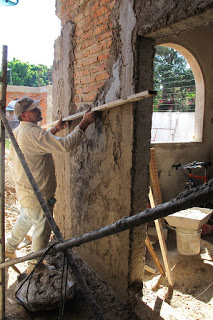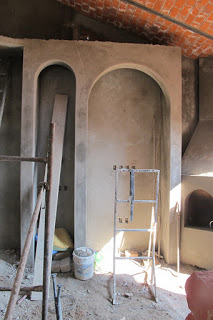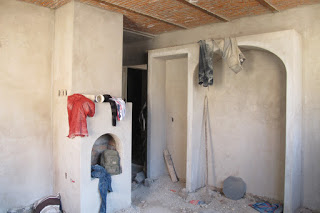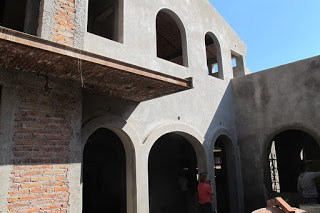November 6, 2016
It has been a long time since I last posted. I somehow lost the link to the Editing page, turns out I had two Google logins…
The plaster work, —which is NOT AT ALL plaster, but cement mortar— is a LONG process. The more arches, edges, corners and other features you have, the longer is going to take.
The brick gets wetted for the better adhesion of the first “rough” coat and the next day, the second, smooth coat gets applied. The Maestro will give you a choice of finishes (smooth, striated, etc) for you to select. I went for smooth, which incidentally is also the easiest to apply.
Before they apply the first rough coat they will apply on the concrete castillos and the concrete dalas —on the vertical and horizontal concrete elements in the masonry— a thin and rough slurry of concrete for better adhesion.
Where ceilings are to be plastered, a metal mesh is straddled over the steel flanges for adhesion.
They apply all the plaster on the interior of the house before they do the exterior. This gives time for full cure of the concrete mortar before it gets primed.
When the interior plaster work is done, they can clean the “floor” and can lay metal mesh and pour the concrete over the boveda ceilings. We just had this process started at the beginning of November.
 |
||||||||
This is Maestro Antonio doing the rough coat by the Entrance, using as “leveling” guide the work he had done on the two corner castillos.
|






0 Responses
Great paintings! This is the type of information that should be shared around the web. Shame on the search engines for no longer positioning this submit upper! Come on over and talk over with my web site . Thanks =)